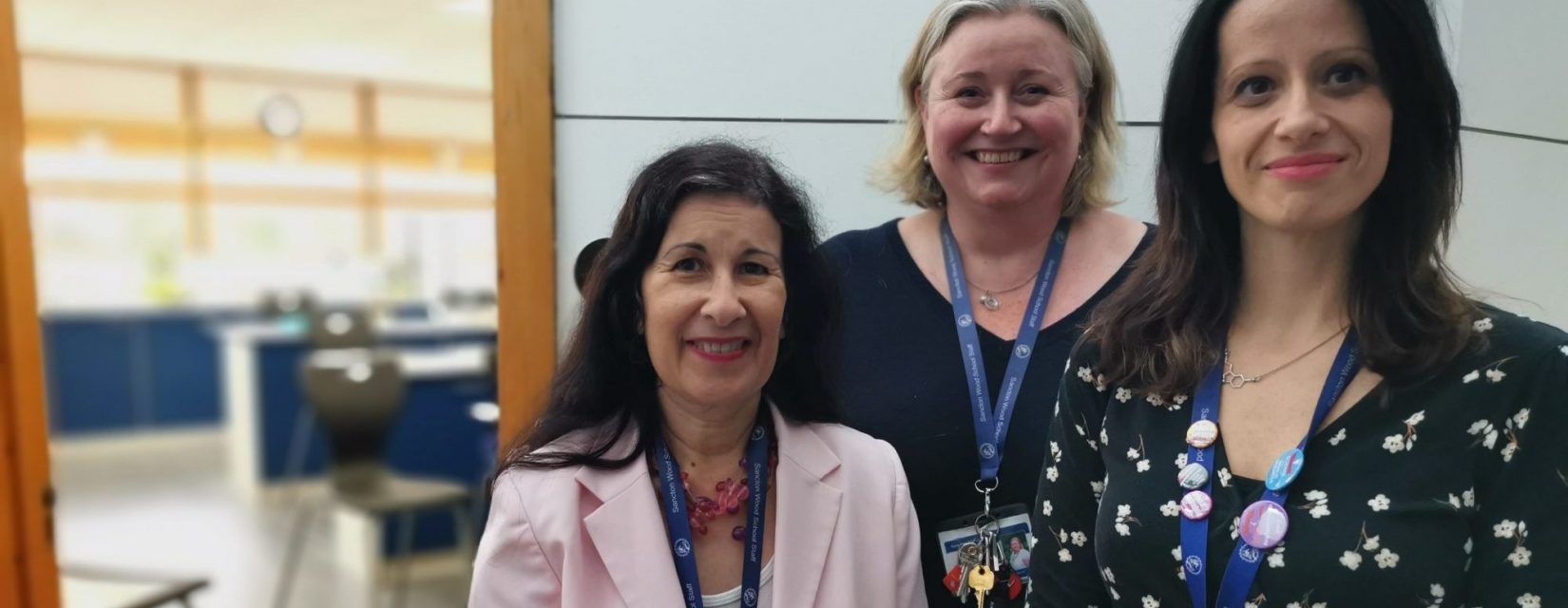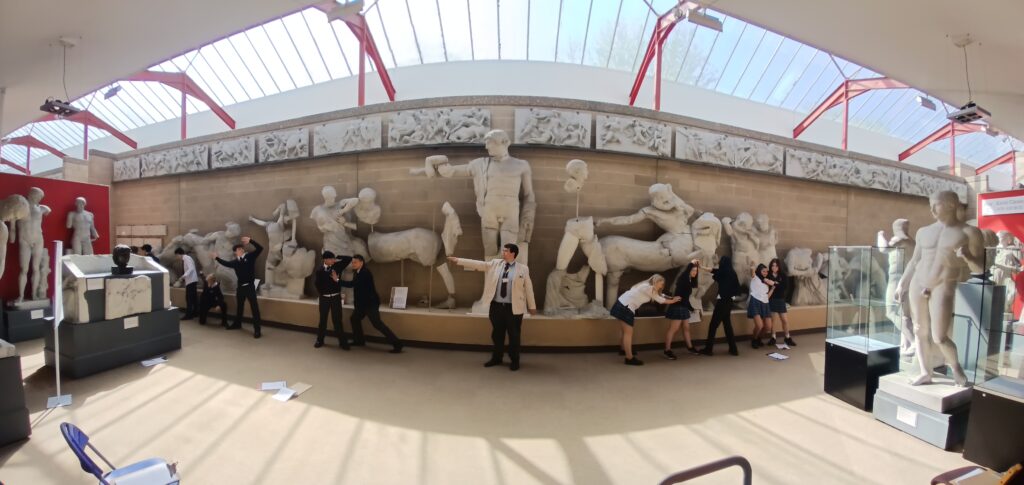Sancton Wood School is celebrating the remarkable success of the extraordinary teachers in its Science department. Head of Science, Rachael Ainscough has just been awarded a membership with The Royal Society of Biology and is in very good company alongside Chemistry teacher, Dr. Corinne Kay, Physics teacher Chris Guerin and Lab Technician and STEM Ambassador Emilia Angelillo.
It is the school’s aim to inspire every student, but with three incredibly accomplished women in the team, they are perfectly placed to help society’s push for equality and drive through the shift in aspirations and achievements of girls.
Emilia who is also an active advocate of supporting women in science says, “Whenever I meet a new class of children, I always ask who wants to be a scientist. Almost always the show of hands is mainly boys”. The feedback she receives vindicates her decision to move from being a microbiologist in hospitals to working in schools. Thank you letters she proudly keeps from the children she has taught are adorned with “thanks to you I now want to be a scientist”.
Rachael’s membership with The Royal Society of Biology was awarded for her contribution to The Human Genome Project. This hugely important and breakthrough international research determined the DNA sequence of the entire human genome and will pave the way for the future progression of medicine.
Alongside contributing to papers for Nature publications, Rachael was also awarded for her contribution in schools for running a medical society and working closely with students who wanted to go into the field. She brings all this experience and expertise to the classroom and next term will be launching a Young Medics club and an Engineering Competition at Sancton Wood.
During Rachael’s time on the Human Genome Project she completed an MBA part time (while working full time) to complement her role in Operations Management and it now allows her to deliver Business GCSE lessons as well. She moved into teaching after considering how to pair raising a family with a career and decided the most uplifting part of her job had been training young people and explaining difficult concepts to them. She says, “watching the moment the ‘penny drops’ gives you such a good feeling and I never get tired of that”.
Corinne was made a prestigious fellow of The Royal Society of Chemistry for her significant contribution to the field of science. She worked on the team that discovered Saquinavir, the first HIV drug that came to the market and won the Prix Gallien. Corinne went on to develop a Parallel Reaction Station which made major advancements in developing methods to automate chemistry and increase the number of compounds that could be tested at one time. Corinne holds five inventors’ patents and her inventions are sold around the world. After reading her contribution to a book on drug metabolism, the Open University approached Corinne and she has now written and taught two courses for them.
With the ever-humble admission all of these accomplishments and a PhD from Cambridge, Corinne credits her daughter’s friends for turning her head to teaching. After home schooling her daughter, she quickly found that her living room was full of her daughter’s friends asking for support with their revision, saying “I wish you were my teacher”.
Like Rachael and Emilia, having worked in the industry allows them to as Corinne says, “use industry experience to inspire students. I have used many of these concepts in the workplace and seen them in laboratory practice. I enjoy linking different pieces of knowledge and teach the concepts together so that the students understand the bigger picture and it allows everything to fall into place.”
Emilia feels passionate about inspiring the next generation of female scientists, equality and addressing prejudice, harassment and stereotypes “we are scientists, we have open minds, we’re good at finding solutions”. She uses the analogy of the popular TV show, ‘The Big Bang Theory’. This widely consumed perception paints female scientists to be geeky, old or ugly and points out that the women we show our students are real; feminine, fun, wives and mothers who happen to have a passion and exceptional talent in the field of science as are many other scientists who have done amazing things.
As with any industry, diversity is key. Chris rightly notes that science is all about new ideas and says that the wider the variety of backgrounds there are working together, the better it is for idea generation and the consequent impact on the quality of work.
Chris came into teaching when he found himself explaining how eclipses happen to a friend in a bar using various condiments on the table. He found it so exciting to explain and pleasing to see how fascinated his friend was, he knew he wanted to make a career of it. In his spare time Chris creates content for his YouTube channel, ‘Astronomy with Mr Guerin’. He noticed that there wasn’t any material focused on GCSE level Astronomy. Such is his passion for the subject and dedication to education he decided to do something about it and hence, the YouTube channel was born.
Identifying students’ strengths and sparking curiosity is key and so when students in Chris’ afterschool Astronomy club shared his fascination with the subject, he opened an Astronomy GCSE. This allowed the students to grow their interest into a formal qualification and the course has grown in numbers ever since.
Sancton Wood teaches science from year 1. When you participate in science “your mind opens” says Emilia. Science is about questioning, investigating, problem solving and teamwork – skills that are important throughout. Perhaps most importantly, science is fun! Emilia, famous for bubbling, flaming, colourful experiments loves to see, “the amazement in their eyes”.
Principal, Richard Settle added, “Cambridge in particular is an amazing place for science and we really want to see our students be part of the future landscape, doing incredible things just as the role models we have provided for them have”.







